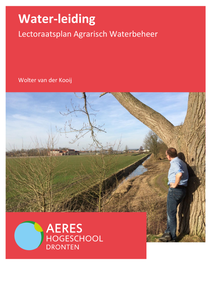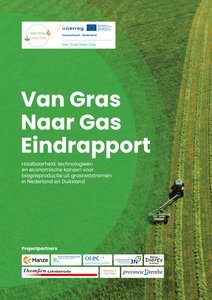The volume of biogas produced in agricultural areas is expected to increase in coming years. An increasing number of local and regional initiatives show a growing interest in decentralized energy production, wherein biogas can play a role. Biogas transport from production sites to user, i.e. a CHP, boiler or an upgrading installation, induces a scale advantage and an efficiency increase. Therefore the exploration of the costs and energy use of biogas transport using a dedicated infrastructure is needed. A model was developed to describe a regional biogas grid that is used to collect biogas from several digesters and deliver it to a central point. The model minimizes transport costs per volumetric unit of biogas in a region. Results are presented for different digester scales, different sizes of the biomass source area and two types of grid lay-out: a star lay-out and a fishbone lay-out. The model shows that transport costs in a fishbone lay-out are less than 10 Vct m3 for a digester scale of 100 m3 h1; for the star lay-outcosts can go up to 45 Vct m3. For 1800 m3 h1 digesters, these values are 4.0 Vct m3 and 6.1 Vct m3, respectively. The results indicate that cooperation between biogas producers in collecting biogas by means of a fishbone lay-out reduces the biogas transport costs relative to using a star lay-out. Merging smaller digesters into a smaller number of larger ones reduces the costs of biogas transport for the same biomass source area.
DOCUMENT
Dit inventariserende rapport over biogas is gemaakt tijdens de minor fysieke veiligheid 2011-2012. Onze opdrachtgever de heer Rodenhuis heeft ons de opdracht gegeven om een inventarisatie te maken van de veiligheid rondom biogasinstallaties in Nederland. Dit omdat deze installaties sterk in opkomst zijn en er op het gebied van veiligheid niet erg veel van bekend is. Er is gewerkt vanuit de volgende probleemstelling: ’Op welke manier en onder welke omstandigheden wordt er in Nederland biogas geproduceerd en toegepast? Welke risico’s brengen de productie en toepassingen van biogas met zich mee? In hoeverre is de huidige Nederlandse wet- en regelgeving up to date om de gevaren en risico’s te beperken bij het gebruik van biogas?’
MULTIFILE

Naast bodembeheer is waterbeheer in de agrarische sector een belangrijk thema. Door klimaatverandering zijn de weersextremen sterk toegenomen. Tijden van wateroverlast worden afgewisseld met lange periodes van droogte. De verbeteringen van het watersysteem in Nederland zijn de afgelopen honderden jaren vooral gericht geweest op het voorkomen van schade door wateroverlast. De afgelopen jaren wordt het steeds duidelijker zichtbaar dat er meer maatregelen genomen moeten worden om droogteschade te voorkomen. Dat vraagt een enorme paradigmaverschuiving bij agrariërs, waterschappen en overheden. In dit lectoraatsplan wordt de problematiek van agrarisch waterbeheer uitgewerkt, worden onderzoeksvragen en doelstellingen geformuleerd en wordt aangegeven hoe het lectoraat de problematiek wil gaan aanpakken: Water-Leiding.
DOCUMENT

Waste disposal management and the energy crisis are important challenges facing most countries. The fruit-processing industry generates daily several tons of wastes, of which the major share comes from banana farms. Anaerobic digestion (AD) technology has been applied to the treatment of wastewater, animal slurry, food waste, and agricultural residues, with the primary goals of energy production and waste elimination. This study examines the effect of organic loading (OL) and cow manure (CM) addition on AD performance when treating banana peel waste (BPW). The maximum daily biogas production rates of banana peels (BPs) with a CM content of 10%, 20%, and 30% at 18 and 22 g of volatile solids (gvs) per liter were 50.20, 48.66, and 62.78 mL·(gvs·d)−1 and 40.49, 29.57, and 46.54 mL·(gvs·d)−1, respectively. However, the daily biogas yield showed no clear interdependence with OL or CM content. In addition, a kinetic analysis using first-order and cone models showed that the kinetic parameters can be influenced by the process parameters.
LINK
Nu steeds meer scholen te maken krijgen met professionele managers groeit de kloof tussen de leiding en uitvoerende docenten. De vereniging Beter Hoger Onderwijs is ontstaan uit deze onvrede. In het artikel wordt een pleidooi gehouden voor lerarenzelfbestuur, gekoppeld ook aan een mandatenorganisatie.
DOCUMENT
Kleinschalige biogas opslag kan de grootschalige productie van biogas stimuleren in een geïntegreerd lokaal energie netwerk met een focus op duurzame energie.
DOCUMENT

In 2030 zullen naar verwachting een half miljoen mensen lijden aan dementie. Het lectoraat Psychogeriatrie doet onder leiding van dr. Frans Hoogeveen onderzoek naar deze sluipende ziekte en haar behandelwijzen. Aan de wieg van het lectoraat stond onder andere WoonZorgcentra Haaglanden. Monique Cremers is directeur Wonen en Zorg bij WZH. Zij geeft als partner haar visie op de praktijk en potentie van de samenwerking met het lectoraat. Zij doet dit in het licht van de ontwikkelingen binnen de sector.
DOCUMENT

Dit project is een eerste analyse naar de haalbaarheid en doelmatigheid van gras vergisting naar biogas.
MULTIFILE

Deze bundel laat de verhalen zien van ervaren en startende teamspelers, die via hun studie het werk op de school naar een hoger plan wisten te brengen. Onder hun leiding (het zijn immers ‘teacher leaders’) hebben schoolteams doelgericht gewerkt aan de verbetering van het onderwijs en alle teamleden droegen daaraan bij. En de leerlingen plukten er de vruchten van!
DOCUMENT
